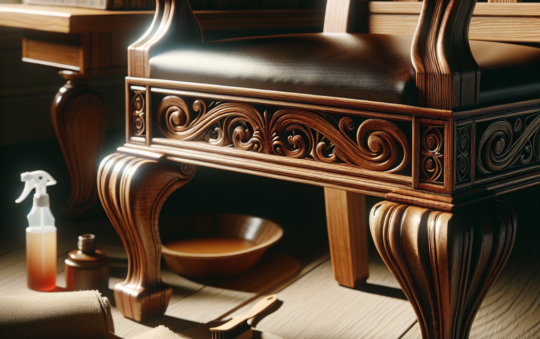Do you ever wonder how often you should replace your pillows? It’s a question that many of us overlook, as we focus on changing bed sheets and mattress covers regularly. But the truth is, pillows are an essential part of our sleep routine and can have a significant impact on our overall comfort and health. In this article, we’ll explore the importance of replacing pillows regularly and provide some helpful tips on how to determine when it’s time for a pillow upgrade. So, let’s dive into the world of pillows and discover the answer to the age-old question – how often should I replace my pillows?
Signs it’s time to replace your pillows
Flat or lumpy pillows
If you find yourself constantly fluffing and adjusting your pillows just to get a comfortable position, or if they seem to have lost their shape and become flat or lumpy, it may be time to replace them. Flat or lumpy pillows can no longer provide the necessary support for your head and neck, resulting in discomfort and a poor night’s sleep.
Pillows no longer provide adequate support
A good pillow should provide support for your head and neck, keeping them aligned with your spine. However, over time, pillows can lose their firmness and become unable to adequately support your body. If you start waking up with neck or back pain, it may be a sign that your pillows are no longer providing the support you need.
Visible signs of wear and tear
Inspect your pillows regularly for any visible signs of wear and tear. This can include frayed edges, clumps of filling sticking out, or an overall worn appearance. These signs indicate that the structural integrity of the pillow has been compromised, and it’s time to replace it for a fresh and functional one.
How long do pillows typically last?
Average lifespan of different pillow types
The lifespan of a pillow can vary depending on its materials and construction. On average, down and feather pillows can last up to 5 to 10 years if properly cared for. Synthetic-filled pillows, such as polyester or microfiber, typically last around 2 to 5 years. Memory foam pillows, known for their durability, can last between 5 to 7 years.
Factors that affect pillow lifespan
Several factors can influence the lifespan of your pillows. The quality of materials used, the frequency of use, and how well you maintain and care for your pillows all play a role. If you regularly wash and fluff your pillows and use pillow protectors, you can extend their lifespan. However, pillows used every night will naturally deteriorate faster compared to those used infrequently.

Health implications of using old pillows
Allergies and dust mites
Old pillows can become a breeding ground for allergens and dust mites. Over time, pillows collect dead skin cells, sweat, and oils from our bodies, creating an ideal environment for dust mites to thrive. These tiny organisms can cause allergic reactions and trigger asthma symptoms, leading to restless nights and poor sleep quality.
Respiratory issues
Breathing in allergens and dust mite waste particles present in old pillows can worsen respiratory conditions such as asthma or hay fever. If you notice an increase in wheezing, coughing, or congestion upon waking, it may be time to replace your pillows and ensure a healthier sleeping environment.
Neck and back pain
Using old and worn-out pillows can contribute to neck and back pain. When the pillows no longer provide adequate support, the neck and spine can become misaligned, leading to discomfort and stiffness. By replacing your pillows regularly, you can support the natural curvature of your neck and spine, promoting proper alignment and reducing the risk of pain and discomfort.
Frequency of pillow replacement for different types of sleepers
Side sleepers
Side sleepers typically put more pressure on their pillows compared to other sleep positions. As a result, their pillows may compress more quickly and require more frequent replacement. Side sleepers should consider replacing their pillows every 1 to 2 years to ensure optimal comfort and support.
Back sleepers
Back sleepers place less stress on their pillows, as their head and neck are naturally aligned with their spine. As a result, their pillows may last longer compared to other sleep positions. Back sleepers should replace their pillows every 2 to 3 years or when they start noticing signs of wear and tear.
Stomach sleepers
Stomach sleepers typically require thinner, flatter pillows to avoid straining their necks. However, these pillows can compress quickly, losing their support. Stomach sleepers should replace their pillows every 6 months to 1 year to ensure their pillows maintain their desired shape and support.

What to consider when choosing new pillows
Material and filling options
When choosing new pillows, consider the various materials and filling options available. Options include down and feather pillows, memory foam pillows, synthetic-filled pillows, and even buckwheat or latex pillows. Each material has its unique characteristics, such as softness, support, and breathability. Take into account your personal preferences and any specific requirements, such as allergies or sensitivities, when selecting the right material for your new pillows.
Personal preferences and sleeping style
Your personal preferences and sleeping style play a vital role in pillow selection. Some individuals prefer firm pillows, while others like the plushness of a soft pillow. Similarly, your sleeping style, whether you sleep on your back, side, or stomach, should influence your choice of pillow. A good pillow should provide the necessary support and comfort for your preferred sleeping position, aiding in a restful night’s sleep.
Budget considerations
Pillows come in a wide range of price points, so consider your budget when selecting new ones. While higher-quality pillows may cost more upfront, they often provide better durability, support, and overall comfort. However, if your budget is tight, there are affordable options available that still offer decent quality and comfort. It’s important to strike a balance between cost and quality to find the best pillow within your budget.
Tips for extending the lifespan of your pillows
Proper pillow maintenance
To extend the lifespan of your pillows, proper maintenance is essential. Regularly fluffing and adjusting your pillows helps distribute the filling evenly and prevent clumping. Additionally, following the manufacturer’s care instructions for washing and drying can help remove any accumulated dirt and oils, keeping your pillows fresh and clean.
Using pillow protectors or covers
Using pillow protectors or covers can provide an extra layer of protection and prevent dirt, dust, and moisture from reaching the pillow’s surface. These covers are usually removable and washable, making it easier to keep your pillows clean and hygienic. Investing in high-quality pillow protectors can significantly extend the lifespan of your pillows.
Rotating and fluffing pillows
Rotating your pillows regularly can help distribute the wear and tear evenly, ensuring the pillows maintain their shape and support. Fluffing your pillows each time you make your bed helps keep the filling from clumping together and provides a fresh and comfortable sleeping surface.

Importance of replacing pillows regularly
Improving sleep quality
Replacing your pillows regularly can greatly improve your sleep quality. With the right amount of support and comfort, you’re more likely to achieve a restful and rejuvenating night’s sleep. By ensuring that your pillows are in good condition, you minimize the risk of discomfort, pain, and disturbances during the night, allowing you to wake up feeling refreshed and ready for the day ahead.
Maintaining overall hygiene
Old pillows can become a haven for allergens, dust mites, and bacteria, negatively impacting your overall hygiene. By regularly replacing your pillows, you reduce the chances of these organisms accumulating and potentially causing health issues. A clean and hygienic sleeping environment contributes to better overall health and well-being.
Preventing health issues
Using old and worn-out pillows can contribute to various health issues, such as allergies, respiratory problems, and musculoskeletal discomfort. By replacing your pillows at appropriate intervals, you minimize the risk of these health issues and maintain optimal comfort and support for your body during sleep.
Common misconceptions about pillow replacement
Pillows never need replacement
One common misconception is that pillows never need to be replaced. While some high-quality pillows may have a longer lifespan, all pillows will eventually lose their supportiveness and become less comfortable over time. Regular replacement ensures that you always have pillows that meet your needs and provide the necessary support for a good night’s sleep.
Only visibly dirty pillows should be replaced
While visible dirt and stains are a clear sign that a pillow needs replacement, it’s not the only indicator. Even if a pillow appears clean, it can still harbor bacteria, allergens, and dust mites that can affect your sleep quality and health. Therefore, it’s important to replace pillows regularly, regardless of their visual cleanliness.
Memory foam pillows last forever
Memory foam pillows are known for their durability, but they don’t last forever. Over time, the foam can lose its ability to bounce back and adapt to your body, resulting in decreased support and comfort. It’s recommended to replace memory foam pillows every 5 to 7 years, depending on the quality and maintenance.

Finding the right pillow for your needs
Consulting with a healthcare professional
If you have specific sleep issues or conditions, it’s advisable to consult with a healthcare professional, such as a chiropractor or a sleep specialist. They can provide expert advice and recommend the best pillow options based on your individual needs and concerns.
Trying different pillow options
Finding the right pillow can be a process of trial and error. You may need to try different types, materials, or firmness levels to find the one that suits you best. Consider purchasing pillows from retailers with generous return policies, allowing you to test them out and return or exchange if they don’t meet your expectations.
Considering specific sleep issues or conditions
If you have specific sleep issues or conditions, such as sleep apnea or chronic neck pain, it’s important to consider these factors when choosing a pillow. Some pillows are specifically designed to address certain sleep issues, such as cervical pillows for neck support. Doing research or seeking professional advice can help you find the right pillow to alleviate your sleep concerns.
Conclusion
Regularly replacing your pillows is essential for maintaining a good night’s sleep and promoting overall comfort and well-being. Signs such as flat or lumpy pillows, inadequate support, and visible wear and tear indicate that it’s time to replace your current pillows. The lifespan of pillows varies depending on their type and quality, but maintaining proper pillow hygiene and using protective covers can help extend their lifespan. Health implications of using old pillows include allergies, respiratory problems, and neck and back pain. Different sleep positions may require more frequent pillow replacement, and choosing the right pillows involves considering materials, personal preferences, and budget. By maintaining and caring for your pillows properly, you can prolong their lifespan. Regular replacement of pillows improves sleep quality, maintains hygiene, and prevents potential health issues. It’s important to debunk common misconceptions about pillow replacement, such as the notion that pillows never need replacement or that visibly dirty pillows are the only ones that should be replaced. Finding the right pillow for your needs may involve consulting with healthcare professionals, trying different options, and considering specific sleep issues or conditions. Ultimately, prioritizing regular pillow replacement contributes to a comfortable and restorative sleep experience.





